 The productivity gap between the UK and its main competitors is significant. In 2024, compared to the UK, output per hour worked was 10.0% higher in France, 19.8% higher in Germany and 41.1% higher in the USA. These percentages are in purchasing-power parity terms: in other words, they reflect the purchasing power of the respective currencies – the pound, the euro and the US dollar.
The productivity gap between the UK and its main competitors is significant. In 2024, compared to the UK, output per hour worked was 10.0% higher in France, 19.8% higher in Germany and 41.1% higher in the USA. These percentages are in purchasing-power parity terms: in other words, they reflect the purchasing power of the respective currencies – the pound, the euro and the US dollar.
GDP per hour worked (in PPP terms) is normally regarded as the best measure of labour productivity. An alternative measure is GDP per worker, but this does not take into account the length of the working year. Using this measure, the gap with the USA is even higher as workers in the USA work longer hours and have fewer days holiday per year than in the UK.
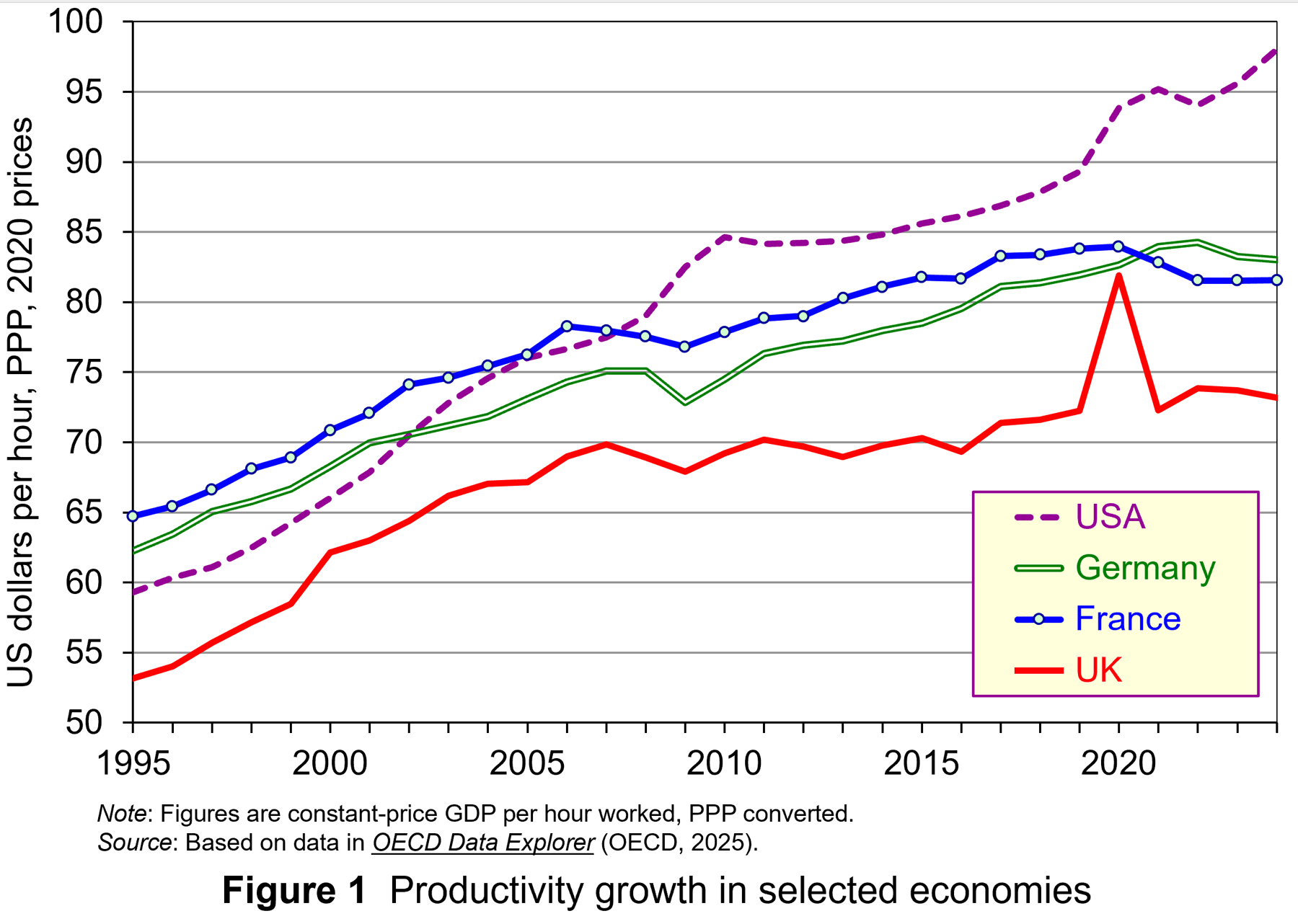 The productivity gap is not a new phenomenon. It has been substantial and growing over the past 20 years. (The exception was in 2020 during lockdowns when many of the least productive sectors, such as hospitality, were forced to close temporarily.)
The productivity gap is not a new phenomenon. It has been substantial and growing over the past 20 years. (The exception was in 2020 during lockdowns when many of the least productive sectors, such as hospitality, were forced to close temporarily.)
The productivity gap is shown in the two figures. Both figures show labour productivity for the UK, France, Germany and the USA from 1995 to 2024.
Figure 1 shows output (GDP) per hour, measured in US dollars in PPP terms.
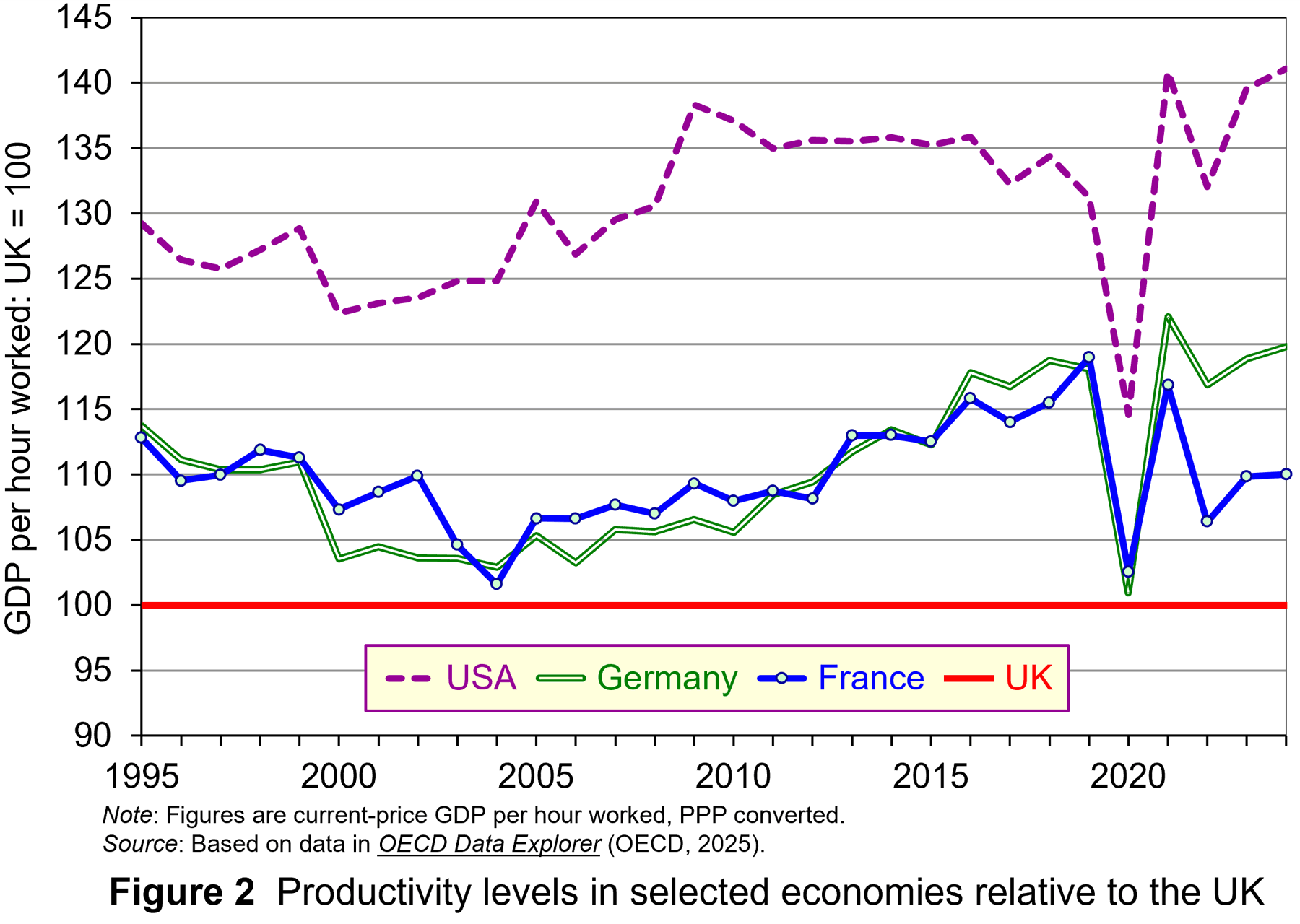 Figure 2 shows output (GDP) per hour relative to the UK, with the UK set at 100. The gap narrowed somewhat up to the early 2000s, but since then has widened.
Figure 2 shows output (GDP) per hour relative to the UK, with the UK set at 100. The gap narrowed somewhat up to the early 2000s, but since then has widened.
Low UK productivity has been a source of concern for UK governments and business for many years. Not only does it constrain the growth in living standards, it also make the UK less attractive as a source of inward investment and less competitive internationally.
Part of the reason for low UK productivity compared to that in other countries is a low level of investment. As a proportion of GDP, the UK has persistently had the lowest, or almost the lowest, level of investment of its major competitors. This is illustrated in Table 1.
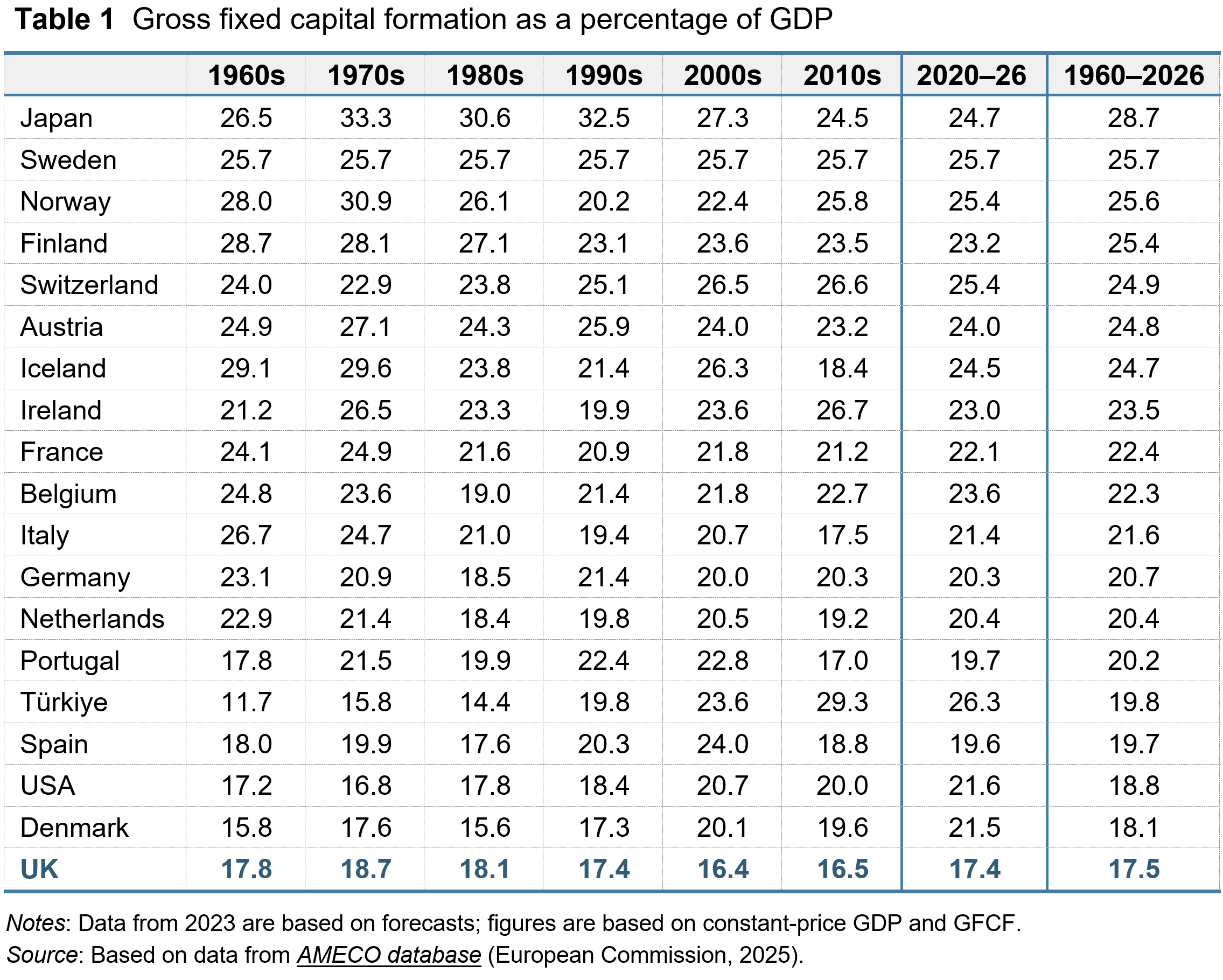
It is generally recognised by government, business and economists that if the economy is to be successful, the productivity gap must be closed. But there is no ‘quick fix’. The policies necessary to achieve increased productivity are long term. There is also a recognition that the productivity problem is a multi-faceted one and that to deal with it requires policy initiatives on a broad front: initiatives that encompass institutional changes as well as adjustments in policy.
So what can be done to improve productivity and how can this be achieved at the micro as well as the macro level?
Improving productivity: things that government can do
 Encouraging investment. Over the years, UK governments have increased investment allowances, enabling firms to offset the cost of investment against pre-tax profit, thereby reducing their tax liability. For example, in the UK, companies can offset a multiple of research and development costs against corporation tax. The rate of relief for small and medium-sized enterprises (SMEs) allows companies that work in science and technology to deduct an extra 86% of their qualifying expenditure from their trading profit in addition to the normal 100% deduction: i.e. a total of 186% deduction. Meanwhile, since April 2016, larger companies have been able to claim a R&D expenditure credit, initially worth 11 per cent of R&D expenditures, then 12 per cent from 2018 and 13 per cent from 2020. This was then raised to 20 per cent from 2023.
Encouraging investment. Over the years, UK governments have increased investment allowances, enabling firms to offset the cost of investment against pre-tax profit, thereby reducing their tax liability. For example, in the UK, companies can offset a multiple of research and development costs against corporation tax. The rate of relief for small and medium-sized enterprises (SMEs) allows companies that work in science and technology to deduct an extra 86% of their qualifying expenditure from their trading profit in addition to the normal 100% deduction: i.e. a total of 186% deduction. Meanwhile, since April 2016, larger companies have been able to claim a R&D expenditure credit, initially worth 11 per cent of R&D expenditures, then 12 per cent from 2018 and 13 per cent from 2020. This was then raised to 20 per cent from 2023.
Strengthening competition. A number of studies have revealed that, with increasing market share, business productivity growth slows. As a result, government policy sought to strengthen competition policy. The Competition Act 1998, which came into force in March 2000, and the Enterprise Act of 2002, enhanced the powers of the Office of Fair Trading (OFT) (a predecessor to the Competition and Markets Authority) in respect to dealing with anti-competitive practices. It was given the ability to impose large fines on firms which had been found guilty of exploiting a dominant market position. Today, one of the strategic goals of the Competition and Markets Authority (CMA) is the aim of ‘extending competition frontiers’ in order to improve the way competition works.
Encouraging an enterprise culture. The creation of an enterprise culture is seen as a crucial factor not only to encourage innovation but also to stimulate technological progress. Innovation and technological progress are crucial to sustaining growth and raising living standards. The UK government launched the Small Business Service in April 2000, later renamed Business and Industry. Its role is to co-ordinate small-business policy within government and liaise with business, providing advice and information. However, according to the OECD, there remains considerable scope for increasing the level of government support for entrepreneurship in the UK.
Improving productivity: things that organisations can do
In the podcast from the BBC’s The Bottom Line series, titled ‘Productivity: How Can British Business Work Smarter’ (see link below), Evan Davis and guests discuss what productivity really looks like in practice – from offices and factories, to call centres and operating theatres.’ The episode identifies a number of ways in which labour productivity can be improved. These include:
- People could work harder;
- Workers could be better trained and more skilled and thus able to produce more per hour;
- Capital could be increased so that workers have more equipment or tools to enable them to produce more, or there could be greater automation, releasing labour to work on other tasks;
- Workplaces could be arranged more efficiently so that less time is spent moving from task to task;
- Systems could put in place to ensure that tasks are done correctly the first time and that time is not wasted having to repeat them or put them right;
- Workers could be better incentivised to work efficiently, whether through direct pay or promotion prospects, or by increasing job satisfaction or by management being better attuned to what motivates workers and makes them feel valued;
- Firms could move to higher-value products, so that workers produce a greater value of output per hour.
The three contributors to the programme discuss various initiatives in their organisations (an electronics manufacturer, NHS foundation trusts and a provider of office services to other organisations).
 They also discuss the role that AI plays, or could play, in doing otherwise time-consuming tasks, such as recording and paying invoices and record keeping in offices; writing grants or producing policy documents; analysing X-ray results in hospitals and performing preliminary diagnoses when patients present with various symptoms; recording conversations/consultations and then sorting, summarising and transcribing them; building AI capabilities into machines or robots to enable them to respond to different specifications or circumstances; software development where AI writes the code. Often, there is a shortage of time for workers to do more creative things. AI can help release more time by doing a lot of the mundane tasks or allowing people to do them much quicker.
They also discuss the role that AI plays, or could play, in doing otherwise time-consuming tasks, such as recording and paying invoices and record keeping in offices; writing grants or producing policy documents; analysing X-ray results in hospitals and performing preliminary diagnoses when patients present with various symptoms; recording conversations/consultations and then sorting, summarising and transcribing them; building AI capabilities into machines or robots to enable them to respond to different specifications or circumstances; software development where AI writes the code. Often, there is a shortage of time for workers to do more creative things. AI can help release more time by doing a lot of the mundane tasks or allowing people to do them much quicker.
There are huge possibilities for increasing labour productivity at an organisational level. The successful organisations will be those that can grasp these possibilities – and in many cases they will be incentivised to so so as it will improve their profitability or other outcomes.
Podcast
Articles
Data
Questions
- In what different ways can productivity be measured? What is the most appropriate measure for assessing the effect of productivity on (a) GDP and (b) human welfare generally?
- Why has the UK had a lower level of labour productivity than France, Germany and the USA for many years? What can UK governments do to help close this gap?
- Find out how Japanese labour productivity has compared with that in the UK over the past 30 years and explain your findings.
- Research an organisation of your choice to find out ways in which labour productivity could be increased.
- Identify various ways in which AI can improve productivity. Will organisations be incentivised to adopt them?
- Has Brexit affected UK labour productivity and, if so, how and why?
 Global long-term economic growth has slowed dramatically since the financial crisis of 2007–8. This can be illustrated by comparing the two 20-year periods 1988 to 2007 and 2009 to 2028 (where IMF forecasts are used for 2024 to 2028: see WEO Database under the Data link below). Over the two periods, average annual world growth fell from 3.8% to 3.1%. In advanced countries it fell from 2.9% to 1.6% and in developing countries from 4.8% to 4.3%. In the UK it fell from 2.4% to 1.2%, in the USA from 3.1% to 1.8% and in Japan from 1.9% to 0.5%.
Global long-term economic growth has slowed dramatically since the financial crisis of 2007–8. This can be illustrated by comparing the two 20-year periods 1988 to 2007 and 2009 to 2028 (where IMF forecasts are used for 2024 to 2028: see WEO Database under the Data link below). Over the two periods, average annual world growth fell from 3.8% to 3.1%. In advanced countries it fell from 2.9% to 1.6% and in developing countries from 4.8% to 4.3%. In the UK it fell from 2.4% to 1.2%, in the USA from 3.1% to 1.8% and in Japan from 1.9% to 0.5%.
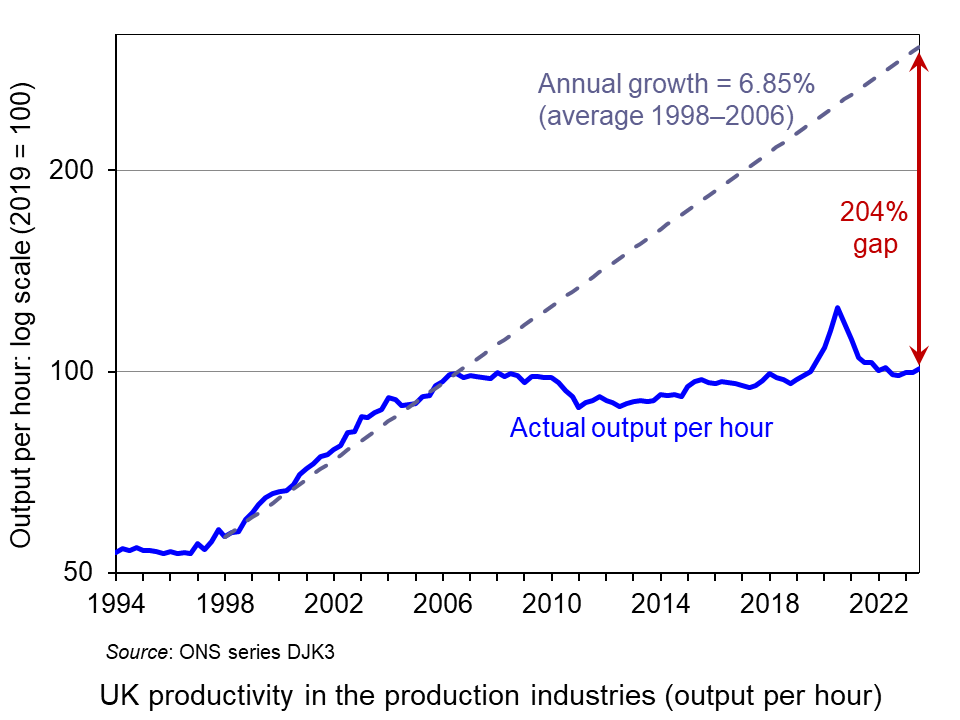 In the UK, labour productivity growth in the production industries was 6.85% per annum from 1998 to 2006. If this growth rate had been maintained, productivity would have been 204% higher by the end of 2023 than it actually was. This is shown in the chart (click here for a PowerPoint).
In the UK, labour productivity growth in the production industries was 6.85% per annum from 1998 to 2006. If this growth rate had been maintained, productivity would have been 204% higher by the end of 2023 than it actually was. This is shown in the chart (click here for a PowerPoint).
The key driver of long-term economic growth is labour productivity, which can best be measured by real GDP per hour worked. This depends on three things: the amount of capital per worker, the productivity of this capital and the efficiency of workers themselves – the latter two giving total factor productivity (TFP). Productivity growth has slowed, and with it the long-term rate of economic growth.
If we are measuring growth in output per head of the population, as opposed to simple growth in output, then another important factor is the proportion of the population that works. With ageing populations, many countries are facing an increase in the proportion of people not working. In most countries, these demographic pressures are likely to increase.
 A major determinant of long-term economic growth and productivity is investment. Investment has been badly affected by crises, such as the financial crisis and COVID, and by geopolitical tensions, such as the war in Ukraine and tensions between the USA and China and potential trade wars. It has also been adversely affected by government attempts to deal with rising debt caused by interventions following the financial crisis and COVID. The fiscal squeeze and, more recently higher interest rates, have dampened short-term growth and discouraged investment, thereby dampening long-term growth.
A major determinant of long-term economic growth and productivity is investment. Investment has been badly affected by crises, such as the financial crisis and COVID, and by geopolitical tensions, such as the war in Ukraine and tensions between the USA and China and potential trade wars. It has also been adversely affected by government attempts to deal with rising debt caused by interventions following the financial crisis and COVID. The fiscal squeeze and, more recently higher interest rates, have dampened short-term growth and discouraged investment, thereby dampening long-term growth.
Another factor adversely affecting productivity has been a lower growth of allocative efficiency. Competition in many industries has declined as the rate of new firms entering and exiting markets has slowed. The result has been an increase in concentration and a growth in supernormal profits.
In the UK’s case, growth prospects have also been damaged by Brexit. According to Bank of England and OBR estimates, Brexit has reduced productivity by around 4% (see the blog: The costs of Brexit: a clearer picture). For many companies in the UK, Brexit has hugely increased the administrative burdens of trading with the EU. It has also reduced investment and led to a slower growth in the capital stock.
The UK’s poor productivity growth over many yeas is examined in the blog The UK’s poor productivity record.
Boosting productivity
So, how could productivity be increased and what policies could help the process?
 Artificial intelligence. One important driver of productivity growth is technological advance. The rapid advance in AI and its adoption across much of industry is likely to have a dramatic effect on working practices and output. Estimates by the IMF suggest that some 40% of jobs globally and 60% in advanced countries could be affected – some replaced and others complemented and enhanced by AI. The opportunities for raising incomes are huge, but so too are the dangers of displacing workers and deepening inequality, as some higher-paid jobs are enhanced by AI, while many lower paid jobs are little affected and other jobs disappear.
Artificial intelligence. One important driver of productivity growth is technological advance. The rapid advance in AI and its adoption across much of industry is likely to have a dramatic effect on working practices and output. Estimates by the IMF suggest that some 40% of jobs globally and 60% in advanced countries could be affected – some replaced and others complemented and enhanced by AI. The opportunities for raising incomes are huge, but so too are the dangers of displacing workers and deepening inequality, as some higher-paid jobs are enhanced by AI, while many lower paid jobs are little affected and other jobs disappear.
AI is also likely to increase returns to capital. This may help to drive investment and further boost economic growth. However, the increased returns to capital are also likely to exacerbate inequality.
To guard against the growth of market power and its abuse, competition policies may need strengthening to ensure that the benefits of AI are widely spread and that new entrants are encouraged. Also training and retraining opportunities to allow workers to embrace AI and increase their mobility will need to be provided.
 Training. And it is not just training in the use of AI that is important. Training generally is a key ingredient in encouraging productivity growth. In the UK, there has been a decline in investment in adult education and training, with a 70% reduction since the early 2000s in the number of adults undertaking publicly-funded training, and with average spending on training by employers decreasing by 27% per trainee since 2011. The Institute for Fiscal Studies identifies five main policy levers to address this: “public funding of qualifications and skills programmes, loans to learners, training subsidies, taxation of training and the regulation of training” (see link in articles below).
Training. And it is not just training in the use of AI that is important. Training generally is a key ingredient in encouraging productivity growth. In the UK, there has been a decline in investment in adult education and training, with a 70% reduction since the early 2000s in the number of adults undertaking publicly-funded training, and with average spending on training by employers decreasing by 27% per trainee since 2011. The Institute for Fiscal Studies identifies five main policy levers to address this: “public funding of qualifications and skills programmes, loans to learners, training subsidies, taxation of training and the regulation of training” (see link in articles below).
Competition. Another factor likely to enhance productivity is competition, both internationally and within countries. Removing trade restrictions could boost productivity growth; erecting barriers to protect inefficient domestic industry would reduce it.
Investment. Policies to encourage investment are also key to productivity growth. Private-sector investment can be encouraged by tax incentives. For example, in the UK the Annual Investment Allowance allows businesses to claim 100% of the cost of plant and machinery up to £1m in the year it is incurred. However, for tax relief to produce significant effects on investment, companies need to believe that the policy will stay and not be changed as economic circumstances or governments change.
 Public-sector investment is also key. Good road and rail infrastructure and public transport are vital in encouraging private investment and labour mobility. And investment in health, education and training are a key part in encouraging the development of human capital. Many countries, the UK included, cut back on public-sector capital investment after the financial crisis and this has had a dampening effect on economic growth.
Public-sector investment is also key. Good road and rail infrastructure and public transport are vital in encouraging private investment and labour mobility. And investment in health, education and training are a key part in encouraging the development of human capital. Many countries, the UK included, cut back on public-sector capital investment after the financial crisis and this has had a dampening effect on economic growth.
Regional policy. External economies of scale could be encouraged by setting up development areas in various regions. Particular industries could be attracted to specific areas, where local skilled workers, managerial expertise and shared infrastructure can benefit all the firms in the industry. These ‘agglomeration economies’ have been very limited in the UK compared with many other countries with much stronger regional economies.
Changing the aims and governance of firms. A change in corporate structure and governance could also help to drive investment and productivity. According to research by the think tank, Demos (see the B Lab UK article and the second report below), if legislation required companies to consider the social, economic and environmental impact of their business alongside profitability, this could have a dramatic effect on productivity. If businesses were required to be ‘purpose-led’, considering the interests of all their stakeholders, this supply-side reform could dramatically increase growth and well-being.
Such stakeholder-governed businesses currently outperform their peers with higher levels of investment, innovation, product development and output. They also have higher levels of staff engagement and satisfaction.
Articles
- World Must Prioritize Productivity Reforms to Revive Medium-Term Growth
IMF Blog, Nan Li and Diaa Noureldin (10/4/24)
- Why has productivity slowed down?
Oxford Martin School News, Ian Goldin, Pantelis Koutroumpis, François Lafond and Julian Winkler (18/3/24)
- How can the UK revive its ailing productivity?
Economics Observatory, Michelle Kilfoyle (14/3/24)
- With the UK creeping out of recession, here’s an economist’s brief guide to improving productivity
The Conversation, Nigel Driffield (13/3/24)
- UK economy nearly a third smaller thanks to ‘catastrophically bad’ productivity slowdown
City A.M., Chris Dorrell (12/3/24)
- Can AI help solve the UK’s public sector productivity puzzle?
City A.M., Chris Dorrell (11/3/24)
- AI Will Transform the Global Economy. Let’s Make Sure it Benefits Humanity
IMF Blog, Kristalina Georgieva (14/1/24)
- Productivity and Investment: Time to Manage the Project of Renewal
NIESR, Paul Fisher (12/3/24)
- Productivity trends using key national accounts indicators
Eurostat (15/3/24)
- New report says change to company law could add £149bn to the UK economy
B Lab UK (28/11/23)
- Investment in training and skills: Green Budget Chapter 9
Institute for Fiscal Studies, Imran Tahir (12/10/23)
Reports
Data
Questions
- Why has global productivity growth been lower since 2008 than before 2008?
- Why has the UK’s productivity growth been lower than many other advanced economies?
- How does the short-run macroeconomic environment affect long-term growth?
- Find out why Japan’s productivity growth has been so poor compared with other countries.
- What are likely to be the most effective means of increasing productivity growth?
- How may demand management policies affect the supply side of the economy?
- How may the adoption of an ESG framework by companies for setting objectives affect productivity growth?
 We have examined inflation in several blogs in recent months. With inflation at levels not seen for 40 years, this is hardly surprising. One question we’ve examined is whether the policy response has been correct. For example, in July, we asked whether the Bank of England had raised interest rates too much, too late. In judging policy, one useful distinction is between demand-pull inflation and cost-push inflation. Do they require the same policy response? Is raising interest rates to get inflation down to the target rate equally applicable to inflation caused by excessive demand and inflation caused by rising costs, where those rising costs are not caused by rising demand?
We have examined inflation in several blogs in recent months. With inflation at levels not seen for 40 years, this is hardly surprising. One question we’ve examined is whether the policy response has been correct. For example, in July, we asked whether the Bank of England had raised interest rates too much, too late. In judging policy, one useful distinction is between demand-pull inflation and cost-push inflation. Do they require the same policy response? Is raising interest rates to get inflation down to the target rate equally applicable to inflation caused by excessive demand and inflation caused by rising costs, where those rising costs are not caused by rising demand?
In terms of aggregate demand and supply, demand-pull inflation is shown by continuing rightward shifts in aggregate demand (AD); cost-push inflation is shown by continuing leftward/upward shifts in short-run aggregate supply (SRAS). This is illustrated in the following diagram, which shows a single shift in aggregate demand or short-run aggregate supply. For inflation to continue, rather than being a single rise in prices, the curves must continue to shift.
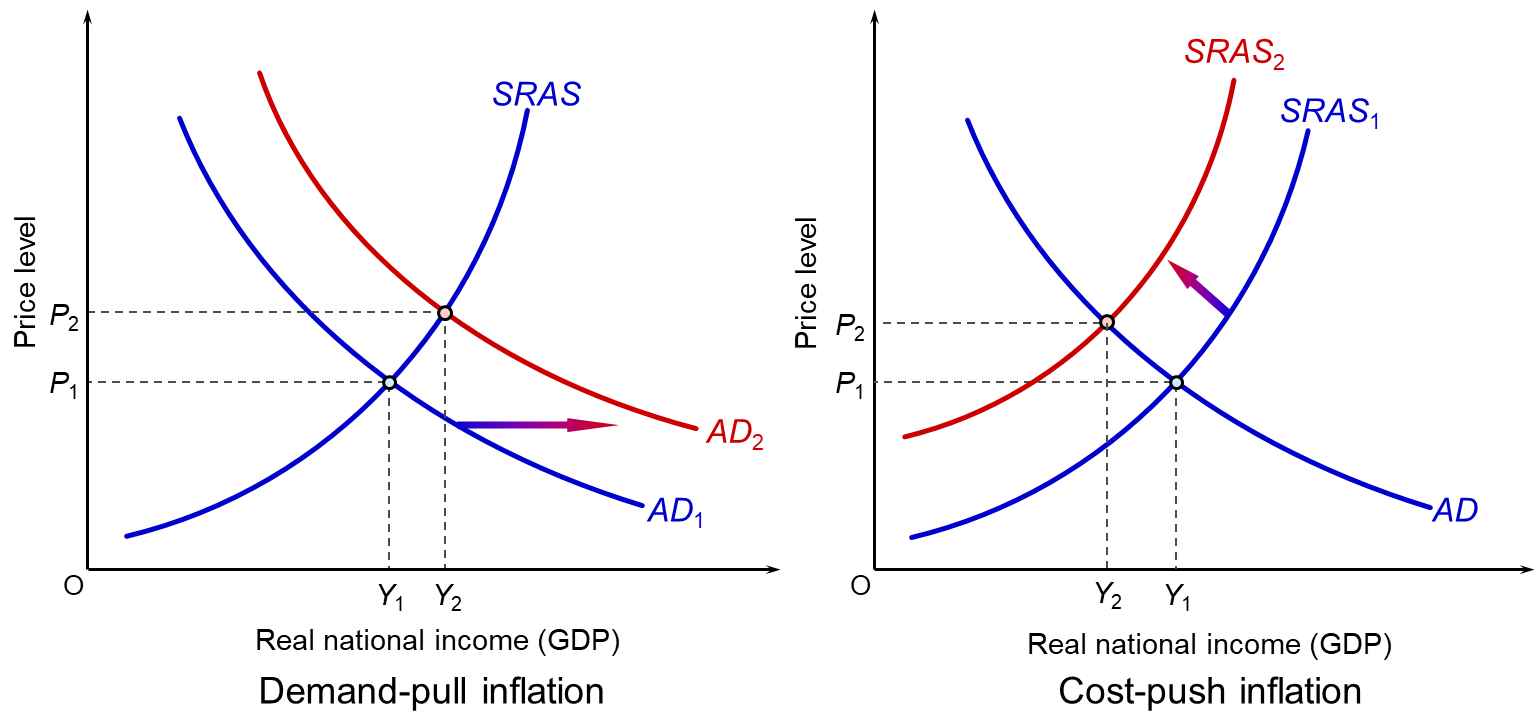
As you can see, the effects on real GDP (Y) are quite different. A rise in aggregate demand will tend to increase GDP (as long as capacity constraints allow). A rise in costs, and hence an upward shift in short-run aggregate supply, will lead to a fall in GDP as firms cut output in the face of rising costs and as consumers consume less as the cost of living rises.
The inflation experienced by the UK and other countries in recent months has been largely of the cost-push variety. Causes include: supply-chain bottlenecks as economies opened up after COVID-19; the war in Ukraine and its effects on oil and gas supplies and various grains; and avian flu and poor harvests from droughts and floods associated with global warming resulting in a fall in food supplies. These all led to a rise in prices. In the UK’s case, this was compounded by Brexit, which added to firms’ administrative costs and, according to the Bank of England, was estimated to cause a long-term fall in productivity of around 3 to 4 per cent.
The rise in costs had the effect of shifting short-run aggregate supply upwards to the left. As well as leading to a rise in prices and a cost-of-living squeeze, the rising costs dampened expenditure.
This was compounded by a tightening of fiscal policy as governments attempted to tackle public-sector deficits and debt, which had soared with the support measures during the pandemic. It was also compounded by rising interest rates as central banks attempted to bring inflation back to target.
Monetary policy response
 Central banks are generally charged with keeping inflation in the medium term at a target rate set by the government or the central bank itself. For most developed countries, this is 2% (see table in the blog, Should central bank targets be changed?). So is raising interest rates the correct policy response to cost-push inflation?
Central banks are generally charged with keeping inflation in the medium term at a target rate set by the government or the central bank itself. For most developed countries, this is 2% (see table in the blog, Should central bank targets be changed?). So is raising interest rates the correct policy response to cost-push inflation?
One argument is that monetary policy is inappropriate in the face of supply shocks. The supply shocks themselves have the effect of dampening demand. Raising interest rates will compound this effect, resulting in lower growth or even a recession. If the supply shocks are temporary, such as supply-chain disruptions caused by lockdowns during the pandemic, then it might be better to ride out the problem and not raise interest rates or raise them by only a small amount. Already cost pressures are easing in some areas as supplies have risen.
If, however, the fall in aggregate supply is more persistent, such as from climate-related declines in harvests or the Ukraine war dragging on, or new disruptions to supply associated with the Israel–Gaza war, or, in the UK’s case, with Brexit, then real aggregate demand may need to be reduced in order to match the lower aggregate supply. Or, at the very least, the growth in aggregate demand may need to be slowed to match the slower growth in aggregate supply.
Huw Pill, the Chief Economist at the Bank of England, in a podcast from the Columbia Law School (see links below), argued that people should recognise that the rise in costs has made them poorer. If they respond to the rising costs by seeking higher wages, or in the case of businesses, by putting up prices, this will simply stoke inflation. In these circumstances, raising interest rates to cool aggregate demand may reduce people’s ability to gain higher wages or put up prices.
 Another argument for raising interest rates in the face of cost-push inflation is when those cost increases are felt more than in other countries. The USA has suffered less from cost pressures than the UK. On the other hand, its growth rate is higher, suggesting that its inflation, albeit lower than in the UK, is more of the demand-pull variety. Despite its inflation rate being lower than in the UK, the problem of excess demand has led the Fed to adopt an aggressive interest rate policy. Its target rate is 5.25% to 5.50%, while the Bank of England’s is 5.25%. In order to prevent short-term capital outflows and a resulting depreciation in the pound, further stoking inflation, the Bank of England has been under pressure to mirror interest rate rises in the USA, the eurozone and elsewhere.
Another argument for raising interest rates in the face of cost-push inflation is when those cost increases are felt more than in other countries. The USA has suffered less from cost pressures than the UK. On the other hand, its growth rate is higher, suggesting that its inflation, albeit lower than in the UK, is more of the demand-pull variety. Despite its inflation rate being lower than in the UK, the problem of excess demand has led the Fed to adopt an aggressive interest rate policy. Its target rate is 5.25% to 5.50%, while the Bank of England’s is 5.25%. In order to prevent short-term capital outflows and a resulting depreciation in the pound, further stoking inflation, the Bank of England has been under pressure to mirror interest rate rises in the USA, the eurozone and elsewhere.
Articles
Blogs on this site
Information and data
Questions
- How may monetary policy affect inflationary expectations?
- If cost-push inflation makes people generally poorer, what role does the government have in making the distribution of a cut in real income a fair one?
- In the context of cost-push inflation, how might the authorities prevent a wage–price spiral?
- With reference to the second article above, explain the ‘monetary policy conundrum’ faced by the Bank of Japan.
- If central banks have a single policy instrument, namely changes in interest rates, how may conflicts arise when there is more than one macroeconomic objective?
- Is Russia’s rise in inflation the result of cost or demand pressures, or a mixture of the two (see articles above)?
 At the time of the 2016 referendum, the clear consensus among economists was that Brexit would impose net economic costs on the UK economy. The size of these costs would depend on the nature of post-Brexit trading relations with the EU. The fewer the new barriers to trade and the closer the alignment with the EU single market, the lower these costs would be.
At the time of the 2016 referendum, the clear consensus among economists was that Brexit would impose net economic costs on the UK economy. The size of these costs would depend on the nature of post-Brexit trading relations with the EU. The fewer the new barriers to trade and the closer the alignment with the EU single market, the lower these costs would be.
The Brexit deal in the form of the EU-UK Trade and Cooperation Agreement (see also) applied provisionally from January 2021, after the end of the transition period, and came into force in May 2021. Although this is a free-trade deal in the sense that goods made largely in the UK or EU can be traded tariff-free between the two, the deal does not apply to services (e.g. financial services) or to goods where components made outside the UK or EU account for more than a certain percentage (the ‘rules of origin‘ condition). Also there has been a huge increase in documentation that must be completed to export to or import from the EU.
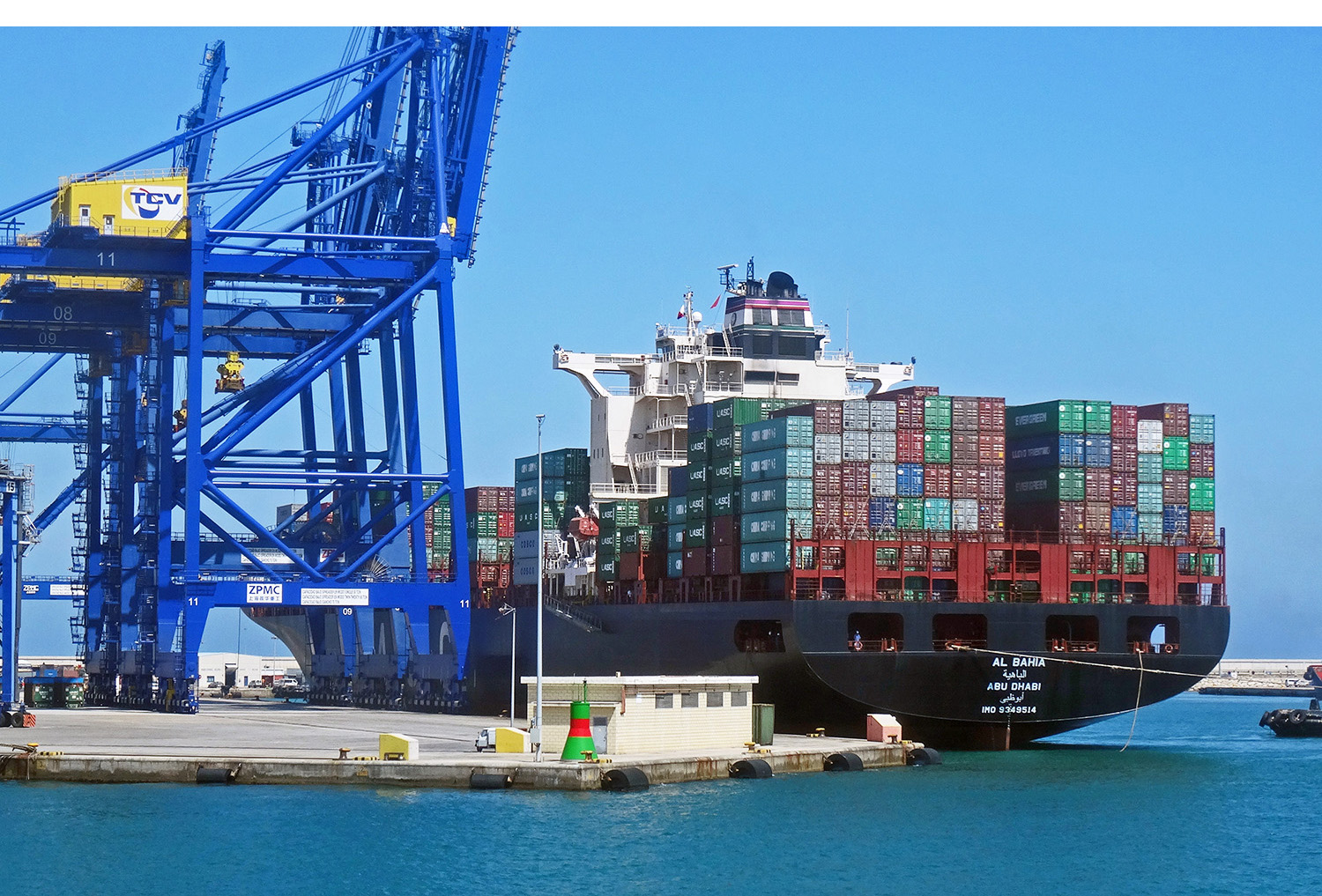 Even though the nature of the Brexit deal has been clear since it was signed in December 2020, assessing the impact of the extra barriers to trade it has created has been hard given the various shocks that have had a severe impact on the UK (and global) economy. First COVID-19 and the associated lockdowns had a direct effect on output and trade; second the longer-term international supply-chain disruptions have extended the COVID costs beyond the initial lockdowns and acted as a brake on recovery and growth; third the Russian invasion of Ukraine imposed a severe shock to energy and food markets; fourth these factors have created not just a supply shock but also an inflationary shock, which has resulted in central banks seeking to dampen demand by significantly raising interest rates. One worry among analysts was that the negative effects of such shocks might be greater on the UK economy than on other countries.
Even though the nature of the Brexit deal has been clear since it was signed in December 2020, assessing the impact of the extra barriers to trade it has created has been hard given the various shocks that have had a severe impact on the UK (and global) economy. First COVID-19 and the associated lockdowns had a direct effect on output and trade; second the longer-term international supply-chain disruptions have extended the COVID costs beyond the initial lockdowns and acted as a brake on recovery and growth; third the Russian invasion of Ukraine imposed a severe shock to energy and food markets; fourth these factors have created not just a supply shock but also an inflationary shock, which has resulted in central banks seeking to dampen demand by significantly raising interest rates. One worry among analysts was that the negative effects of such shocks might be greater on the UK economy than on other countries.
However, the negative effects of Brexit are now becoming clearer and various institutions have attempted to quantify the costs. These costs are largely in terms of lower GDP than otherwise. This results from:
- reduced levels of trade with the EU, thereby reducing the gains from exploiting comparative advantage;
- increased costs of trade with the EU;
- disruptions to supply chains;
- reduced competition from European firms, with many no longer exporting to the UK because of the costs;
- reduced inward investment;
- labour market shortages, particularly in certain areas such a hospitality, construction, social care and agriculture as many European workers have left the UK and fewer come;
- a reduction in productivity.
Here is a summary of the findings of different organisations.
The Office for Budget Responsibility (OBR)
The OBR has argued that Brexit as negotiated in the Trade and Cooperation Agreement:
will reduce long-run productivity by 4 per cent relative to remaining in the EU. This largely reflects our view that the increase in non-tariff barriers on UK-EU trade acts as an additional impediment to the exploitation of comparative advantage.21
In addition the OBR estimates that:
Both exports and imports will be around 15 per cent lower in the long run than if the UK had remained in the EU.21
Recent evidence supports this. According to the OBR:
UK and aggregate advanced economy goods export volumes fell by around 20 per cent during the initial wave of the pandemic in 2020. But by the fourth quarter of 2021 total advanced economy trade volumes had rebounded to 3 per cent above their pre-pandemic levels while UK exports remain around 12 per cent below.22
This assumption was repeated in the November 2022 Economic and Fiscal Outlook (p.26) 23. What is more, new trade deals will make little difference, either because they are a roll-over from previous EU trade deals with the respective country or have only a very small effect (e.g. the trade deal with Australia).
The Bank of England
The Bank of England, ever since the referendum in 2016, has forecast that Brexit would damage trade, productivity and GDP growth. In recent evidence to the House of Commons Treasury Committee5, Andrew Bailey, the Governor, stated that previous work by the Bank concluded that Brexit would reduce productivity by a bit over 3% and that this was still the Bank’s view.
His colleague, Dr Swati Dhingra, stated that, because of Brexit, there was a ‘much bigger slowdown in trade in the UK compared to the rest of the world’. She continued:
The simple way of thinking about what Brexit has done to the economy is that in the period after the referendum, the biggest depreciation that any of the world’s four major economies have seen overnight contributed to increasing prices [and] reduced wages. …We think that number is about 2.6% below the trend that real wages would have been on. Soon afterwards and before the TCA happened came the effects of the uncertainty that was unleashed, which basically translates into reduced business investment and less certainty of the FDI effects. Those tend to be very long-pay things.
She continued that now we are seeing significantly reduced trade directly as a result of the Brexit trade agreement (TCA).
Her colleague, Dr Catherine Mann, argued that ‘the small firms are the ones that are the most damaged, because the cost of the paperwork and so forth is a barrier’. This does not only affect UK firms exporting to the EU but also EU firms exporting to the UK. Reduced imports from EU firms reduces competition in the UK, which tends to lead to higher prices.
The Institute for Fiscal Studies
The IFS has consistently argued that Brexit, because of increased trade barriers with the EU, has reduced UK trade, productivity and GDP. In a recent interview6, its Director, Paul Johnson, stated that ‘Brexit, without doubt, has made us poorer than we would otherwise have been’. That, plus other convulsions, such as the mini-Budget of October 2022, have reduced foreigners’ confidence in the UK, with the result that investment in the UK and trade with the rest of the world have fallen.
Resolution Foundation
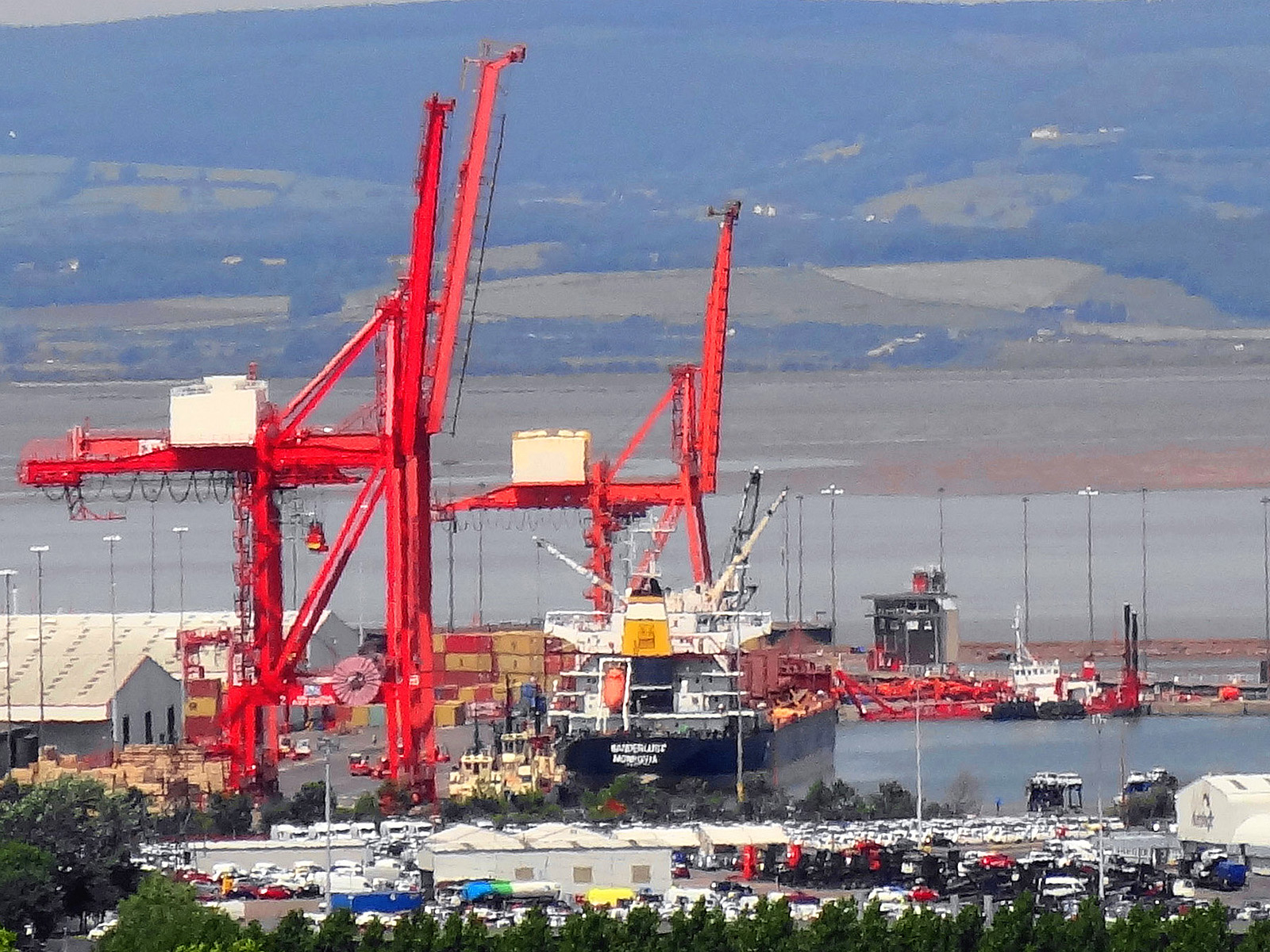 In a major Resolution Foundation report24, the authors argued that the effects of Brexit will take time to materialise fully and will occur in three distinct phases. First, in anticipation of permanent effects, the referendum caused sterling to depreciate and this adversely affected household incomes. What is more, the uncertainty about the future caused business investment to fall (but not inward FDI). Second, the Trade and Cooperation Act, by introducing trade barriers, reduced UK trade with the EU. But trade with the rest of the world also fell suggesting that Brexit is impacting UK trade openness and competitiveness more broadly. Third, there will be structural changes to the UK economy over the long-term which will adversely affect economic growth:
In a major Resolution Foundation report24, the authors argued that the effects of Brexit will take time to materialise fully and will occur in three distinct phases. First, in anticipation of permanent effects, the referendum caused sterling to depreciate and this adversely affected household incomes. What is more, the uncertainty about the future caused business investment to fall (but not inward FDI). Second, the Trade and Cooperation Act, by introducing trade barriers, reduced UK trade with the EU. But trade with the rest of the world also fell suggesting that Brexit is impacting UK trade openness and competitiveness more broadly. Third, there will be structural changes to the UK economy over the long-term which will adversely affect economic growth:
A less-open UK will mean a poorer and less productive one by the end of the decade, with real wages expected to fall by 1.8 per cent, a loss of £470 per worker a year, and labour productivity by 1.3 per cent, as a result of the long-run changes to trade under the TCA. This would be equivalent to losing more than a quarter of the last decade’s productivity growth.
Nuffield Trust
One of the key effects of Brexit has been on the labour market and especially on sectors, such as hospitality, agriculture, construction, health and social care. These sectors are experiencing labour shortages, in part due to EU nationals leaving the UK. In 2021, the Nuffield Trust looked at the supply of workers in health and social care25 and found that, as a result of increased bureaucratic hurdles, the number of EU/EFTA-trained nurses had declined since 2016. In social care, new immigration rules have made it virtually impossible to recruit from the EU. A more recent report looked at the recruitment of doctors in four specific specialties.26 In each case, although the number recruited from the EU/EFTA was still increasing, the rate of increase had slowed significantly. The reason appeared to be Brexit not COVID-19.
Ivalua
Research by Coleman Parkes for Ivalua18 shows that 80% of firms found Brexit to have been the biggest cause of supply-chain disruptions in the 12 months to August 2022, with 83% fearing the biggest disruptions from Brexit are yet to come. Brexit was found to have had a bigger effect on supply chains than the war in Ukraine, rising energy costs and COVID-19.
Centre for European Reform
Modelling conducted by John Springford27 used a ‘doppelgängers’ method to show the effects of Brexit on the UK economy. Each doppelgänger is ‘a basket of countries whose economic performance closely matches the UK’s before the Brexit referendum and the end of the transition period’. Comparing the UK’s performance with the doppelgänger can show the difference between leaving and not leaving the UK. Doppelgängers were estimated for GDP, investment (gross fixed capital formation), total services trade (exports plus imports) and total goods trade (ditto).
The results are sobering. In the final quarter of 2021, UK GDP is 5.2 per cent smaller than the modelled, doppelgänger UK; investment is 13.7 per cent lower; and goods trade, 13.6 per cent lower.
Economic and Social Research Institute (ESRI) (Ireland)
Similar results for UK trade have been obtained by Janez Kren and Martina Lawless in research conducted for the ESRI.28 They used product-level trade flows between the EU and all other countries in the world as a comparison group. This showed a 16% reduction in UK exports to the EU and a 20% reduction in UK imports from the EU relative to the scenario in which Brexit had not occurred.
British Chambers of Commerce (BCC) survey
According to a BCC survey of 1168 businesses33, 92% of which are SMEs, more than three quarters (77%) for which the Brexit deal is applicable say it is not helping them increase sales or grow their business and 56% say they have difficulties in adapting to the new rules for trading goods. The survey shows that UK firms are facing significant challenges in trying to trade with EU countries under the terms of the Trade and Cooperation Agreement. What is more, 80% of firms had seen the cost of importing increase; 53% had seen their sales margins decrease; and almost 70% of manufacturers had experienced shortages of goods and services from the EU.
Academic studies
Research at the Centre for Business Prosperity, Aston University, by Jun Du, Emine Beyza Satoglu and Oleksandr Shepotylo20, 29 found that UK exports to the EU ‘fell by an average of 22.9% in the first 15 months after the introduction of the EU-UK Trade and Cooperation Agreement’. The negative effect on UK exports persisted and deepened from January 2021 to March 2022. The research involved comparing actual trade with an ‘alternative UK economy’ model based on the UK having remained in the EU. What is more, the researchers found that there had been a reduction of 42% in the number of product varieties exported to the EU, with a large number of exporters simply ceasing to export to the EU and with many of the remaining exporters streamlining their product ranges.
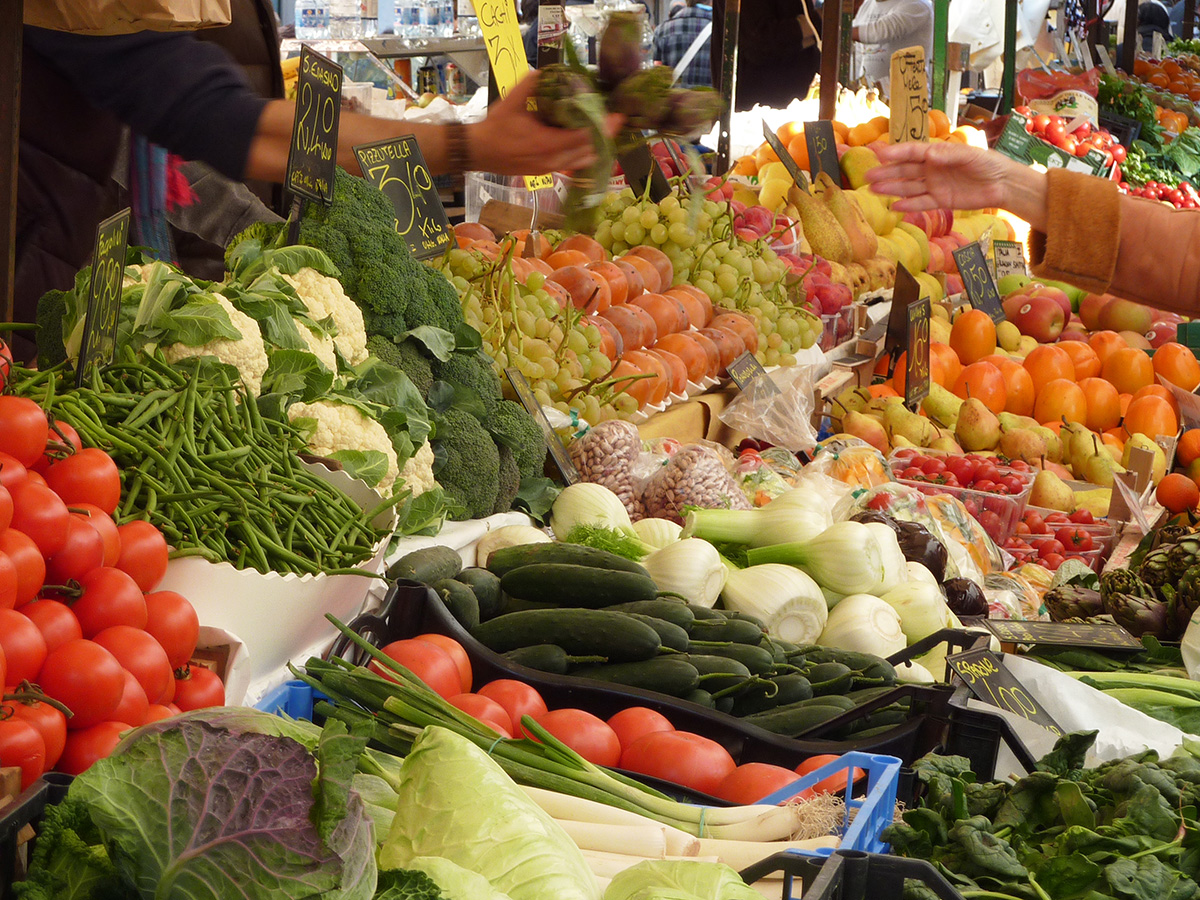 Research at the LSE’s Centre for Economic Performance by Jan David Bakker, Nikhil Datta, Richard Davies and Josh De Lyon31 found that leaving the EU added an average of £210 to UK household food bills over the two years to the end of 2021. This amounted to a total cost to consumers of £5.8 billion. This confirmed the findings of previous research30 that the increase in UK-EU trade barriers led to food prices in the UK being 6% higher than they would have been.
Research at the LSE’s Centre for Economic Performance by Jan David Bakker, Nikhil Datta, Richard Davies and Josh De Lyon31 found that leaving the EU added an average of £210 to UK household food bills over the two years to the end of 2021. This amounted to a total cost to consumers of £5.8 billion. This confirmed the findings of previous research30 that the increase in UK-EU trade barriers led to food prices in the UK being 6% higher than they would have been.
Finally, a report from the Migration Observatory at the University of Oxford32 examined the effects of the ending of the free movement of labour from the EU to the UK. Visas are now required, but ‘low-wage occupations that used to rely heavily on EU workers are now ineligible for work visas, with some limited exceptions for social care and seasonal workers’. Many industries are facing labour shortages. Reasons include other factors, such as low pay and unattractive working conditions, and workers leaving the workforce during the pandemic and afterwards. But the end of free movement appears to have exacerbated these existing problems.
References
Videos
 The Brexit effect: how leaving the EU hit the UK
The Brexit effect: how leaving the EU hit the UKFinancial Times film (18/10/22)
 What impact is Brexit having on the UK economy?
What impact is Brexit having on the UK economy?Brexit and the UK economy, Ros Atkins (29/10/22)
 Why Brexit is damaging the UK economy both now and in the future
Why Brexit is damaging the UK economy both now and in the futureEconomics Help on YouTube, Tejvan Pettinger (5/12/22)
 Why the Costs of Brexit keep growing for the UK economy
Why the Costs of Brexit keep growing for the UK economyEconomics Help on YouTube, Tejvan Pettinger (17/10/22)
 Treasury Committee (see also)
Treasury Committee (see also)Parliament TV (25/11/22) (see 15:03:00 to 15:08:12) (Click here for a transcript: see Q637 to Q641)
 UK economy made worse by ‘own goals’ like Brexit and Truss mini-budget, IFS economist says
UK economy made worse by ‘own goals’ like Brexit and Truss mini-budget, IFS economist saysSky News, Paul Johnson (IFS) (18/11/22)
Articles
- Brexit and the economy: the hit has been ‘substantially negative’
Financial Times, Chris Giles (30/11/22)
- ‘What have we done?’: six years on, UK counts the cost of Brexit
The Observer, Toby Helm, Robin McKie, James Tapper & Phillip Inman (25/6/22)
- Brexit did hurt the City’s exports – the numbers don’t lie
Financial News, David Wighton (9/11/22)
- Brits are starting to think again about Brexit as the economy slides into recession
CNBC, Elliot Smith (23/11/22)
- Brexit has cracked Britain’s economic foundations
CNN, Hanna Ziady (24/12/22)
- Mark Carney: ‘Doubling down on inequality was a surprising choice’
Financial Times, Edward Luce (14/10/22)
- Brexit: Progress on trade deals slower than promised
BBC News, Ione Wells & Brian Wheeler (2/12/22)
- How Brexit costs this retailer £1m a month in sales
BusinessLive, Tom Pegden (22/11/22)
- Brexit Is Hurting The UK Economy, Bank Of England Official Says
HuffPost, Graeme Demianyk (16/11/22)
- Brexit and drop in workforce harming economic recovery, says Bank governor
The Guardian, Richard Partington (16/11/22)
- Brexit a major cause of UK’s return to austerity, says senior economist
The Guardian, Anna Isaac (14/11/22)
- 80% of UK businesses say Brexit caused the biggest supply chain disruption in the last 12 months
Ivalua (28/11/22)
- Brexit added £210 to household food bills, new research finds
Sky News, Faye Brown (1/12/22)
- Brexit changes caused 22.9% slump in UK-EU exports into Q1 2022 – research
Expertfile (8/12/22)
Research and analysis
- Brexit analysis
OBR (26/5/22)
- The latest evidence on the impact of Brexit on UK trade
OBR (March 2022)
- Economic and fiscal outlook – November 2022 (PDF)
OBR (17/11/22)
- The Big Brexit (PDF)
Resolution Foundation, Swati Dhingra, Emily Fry, Sophie Hale & Ningyuan Jia (June 2022)
- Going it alone: health and Brexit in the UK
Nuffield Trust, Mark Dayan, Martha McCarey, Tamara Hervey, Nick Fahy, Scott L Greer, Holly Jarman, Ellen Stewart and Dan Bristow (20/12/21)
- Has Brexit affected the UK’s medical workforce?
Nuffield Trust, Martha McCarey and Mark Dayan (27/11/22)
- What can we know about the cost of Brexit so far?
Centre for European Reform, John Springford (9/6/22)
- Brexit reduced overall EU-UK goods trade flows by almost one-fifth
Economic and Social Research Institute (Ireland), Janez Kren and Martina Lawless (19/10/22)
- Post-Brexit UK Trade – An Update (PDF)
Centre for Business Prosperity, Aston University, Jun Du, Emine Beyza Satoglu and Oleksandr Shepotylo (November 2022)
- Post-Brexit imports, supply chains, and the effect on consumer prices (PDF)
UK in a Changing Europe, Jan David Bakker, Nikhil Datta, Josh De Lyon, Luisa Opitz and Dilan Yang (25/4/22)
- Non-tariff barriers and consumer prices: evidence from Brexit
Centre for Economic Performance, LSE, Jan David Bakker, Nikhil Datta, Richard Davies and Josh De Lyon (December 2022)
- How is the End of Free Movement Affecting the Low-wage Labour Force in the UK?
Migration Observatory, University of Oxford, Madeleine Sumption, Chris Forde, Gabriella Alberti and Peter William Walsh (15/8/22)
- The Trade and Cooperation Agreement: Two Years On – Proposals For Reform by UK Business
British Chambers of Commerce (21/12/22)
- The Detriments of Brexit
Yorkshire Bylines (June 2022) (see also)
Questions
- Summarise the negative effects of Brexit on the UK economy.
- Why is it difficult to quantify these effects?
- Explain the ‘doppelgängers’ method of estimating the costs of Brexit? How reliable is this method likely to be?
- How have UK firms attempted to reduce the costs of exporting to the EU?
- Is Brexit the sole cause of a shortage of labour in many sectors in the UK?

Aggregate demand has been booming as the world bounces back from the pandemic. At the same time, aggregate supply is severely constrained. These supply constraints are making potential national income smaller – at least temporarily. The result is that many countries are heading for recession.
At the same time, supply constraints are causing prices to rise, especially energy and food prices. This cost-push inflation is made worse by the rises in aggregate demand.
The result is ‘stagflation’ – a recession, or stagnation, accompanied by high inflation. In the UK, the latest Bank of England Monetary Policy Report forecast that by the end of 2022, CPI inflation would be 13.1% and that in 2023, real GDP would fall by 1.5%.
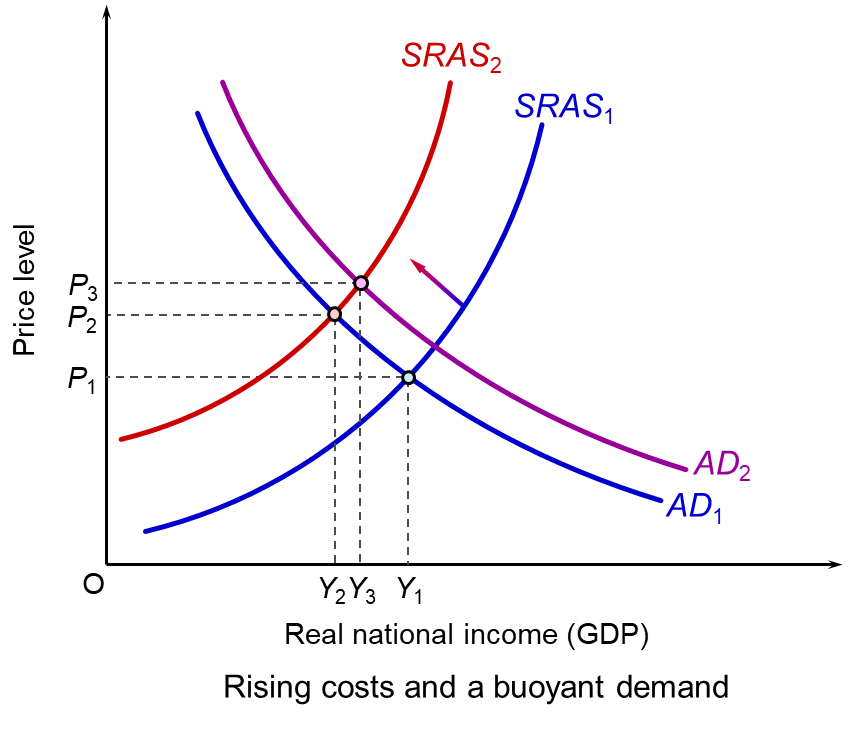 This effect of an adverse supply shock accompanied by relatively buoyant aggregate demand (at least initially) can be illustrated with an aggregate demand and supply diagram. The supply shock is illustrated by an upward shift to the left of the short-run aggregate supply curve (SRAS). (If the shock is a direct rise in prices, then it can be seen as a vertical upward shift. If it is a fall in the total amount supplied, then it can be seen as a horizontal leftward shift.) In the diagram, aggregate supply shifts from SRAS1 to SRAS2. The price level rises from P1 to P2. If costs go on rising or supply goes on falling then the curve will go on shifting upwards to the left.
This effect of an adverse supply shock accompanied by relatively buoyant aggregate demand (at least initially) can be illustrated with an aggregate demand and supply diagram. The supply shock is illustrated by an upward shift to the left of the short-run aggregate supply curve (SRAS). (If the shock is a direct rise in prices, then it can be seen as a vertical upward shift. If it is a fall in the total amount supplied, then it can be seen as a horizontal leftward shift.) In the diagram, aggregate supply shifts from SRAS1 to SRAS2. The price level rises from P1 to P2. If costs go on rising or supply goes on falling then the curve will go on shifting upwards to the left.
If the government responds by increasing benefits or reducing taxes, then, other things being
equal, aggregate demand will rise. In the diagram, the AD curve will shift to the right, e.g. from AD1 to AD2. Real GDP only falls to Y3 not Y2. However, the price level rises further: from P2 to P3.
Why has aggregate supply fallen?
There are several factors that have contributed to the fall in aggregate supply/rise in costs.
- Stretched supply chains, which had been adversely affected by Covid. Congestion at container ports has led to delays, with warehouses and shops being short of stock.
- Labour shortages, with many people not returning to the labour force after being laid off or furloughed, or only returning part time, leaving firms needing more people. The problem has been particularly acute in the UK, with many EU citizens having returned to the EU after Brexit and the UK having to rely increasingly on staff from outside the EU.
 The war in Ukraine. This has had a major impact on the supply of natural gas and oil. The war has also led to a fall in grain and other food supplies from Ukraine, as ports have been blockaded and there have been disruptions to planting and harvesting.
The war in Ukraine. This has had a major impact on the supply of natural gas and oil. The war has also led to a fall in grain and other food supplies from Ukraine, as ports have been blockaded and there have been disruptions to planting and harvesting.- Climate change is causing more severe weather events, such as droughts in Europe and western USA. The droughts of 2022 will compound the problem of food shortages and food price inflation.
- In the UK, Brexit costs, such as increased administrative burdens and difficulties in both exporting and importing, have dampened production and hence adversely impacted on aggregate supply.
- Increased industrial action. As the cost of living soars, unions are demanding pay increases to match the rise in the cost of living. Pay rises further increase firms’ costs – and the bigger the pay rises, the bigger the rise in costs.
The problem with a fall in aggregate supply is that it reduces real GDP. People as a whole are poorer. To use a common analogy, the national ‘pie’ has shrunk. Giving everyone a bigger knife and fork (i.e. a rise in nominal aggregate demand) will not make people better off. It just compounds the problem of rising prices, as the diagram shows.
In the short term, with GDP shrinking, there is a major issue of distribution. If the poor are to be given help so that they are not made even poorer, then other people will have been made worse off. In other words, their nominal incomes must rise more slowly than prices.
Monetary policy
 Central banks generally have a mandate of keeping inflation close to 2% over the medium term. Their levers are changes in interest rates, underpinned by changes in the money supply – in extreme times by quantitative easing (creating money by buying assets with newly created money) or quantitative tightening (withdrawing money from the economy by selling assets). Central banks, faced by soaring inflation, have been raising interest rates. The Fed has recently raised the Federal Funds rate by 0.75 percentage points (75 basis points) and the Bank of England and the European Central Bank by 0.5 percentage points (50 basis points).
Central banks generally have a mandate of keeping inflation close to 2% over the medium term. Their levers are changes in interest rates, underpinned by changes in the money supply – in extreme times by quantitative easing (creating money by buying assets with newly created money) or quantitative tightening (withdrawing money from the economy by selling assets). Central banks, faced by soaring inflation, have been raising interest rates. The Fed has recently raised the Federal Funds rate by 0.75 percentage points (75 basis points) and the Bank of England and the European Central Bank by 0.5 percentage points (50 basis points).
Raising interest rates reduces inflation by dampening aggregate demand. In the diagram, the AD curve shifts to the left (or shifts to the right less quickly). This will dampen inflation, as falling real demand will force firms to cut prices. But it will also force them to cut output and employment, thereby worsening the recession.
Central banks recognise this dilemma, but also recognise that if inflation is not brought rapidly under control, it could spiral upwards, with wages and prices chasing each other in a wage–price spiral, which only gets worse as inflationary expectations rise. The short-term pain of falling real income is a price worth paying for getting inflation under control.
Fiscal policy
In the short term, there is little that fiscal policy can do to raise real GDP. The focus, as it was during the pandemic, must therefore be in providing relief to those most in need.
In the UK, the energy price cap set by Ofgem will see likely energy bills for the typical household quadruple in just a year, from a little over £1000 per annum at January 2021 prices to over £4200 in predicted January 2023 prices. These higher prices partly reflect rising wholesale energy costs and partly the need for energy companies, in a process known as ‘backwardation’, to recoup hedging costs they have incurred so as not to be forced out of business.
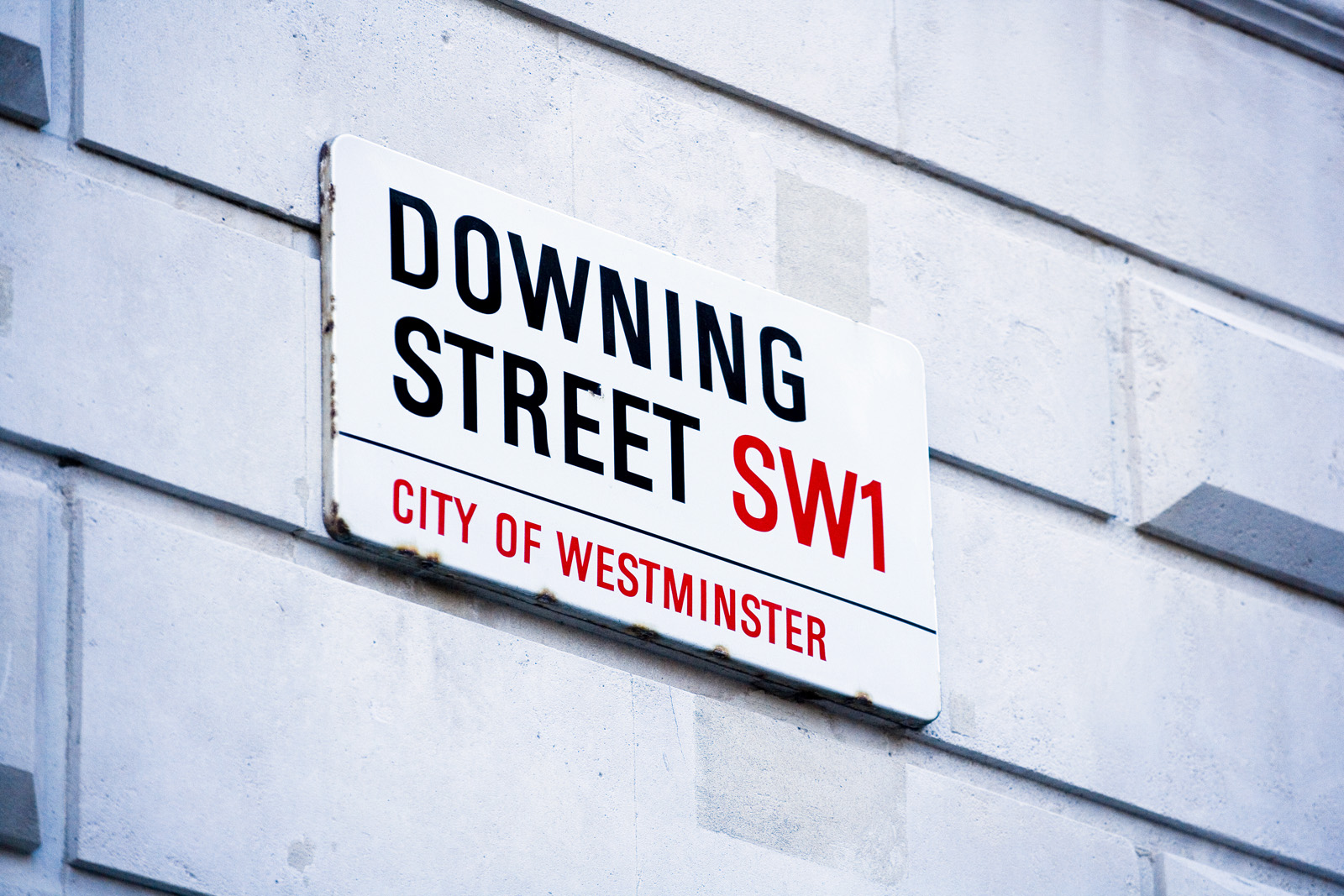 Relief for consumers can be in various forms. For example, the government could pay subsidies to energy suppliers to cap prices at a lower level, perhaps just for the poorest households. Or it could pay grants to help people with their bills. Again, these could be targeted to the poorest families, or paid on a sliding scale according to income. Or VAT on gas and electricity could be scrapped.
Relief for consumers can be in various forms. For example, the government could pay subsidies to energy suppliers to cap prices at a lower level, perhaps just for the poorest households. Or it could pay grants to help people with their bills. Again, these could be targeted to the poorest families, or paid on a sliding scale according to income. Or VAT on gas and electricity could be scrapped.
Generally the more people are entitled to help, the more expensive it is for the government and hence the less generous the help per family is likely to be.
Then there is the question of whether such measures should be accompanied by a rise in broadly-based tax, such as income tax, or whether the government should borrow more, which would be likely to push up interest rates and increase the cost of servicing government debt.
One topic of debate in the Conservative leadership contest is whether taxes should be cut to help people struggling with the cost of living. Whilst such a policy, if carefully targeted to investment, might increase aggregate supply over the longer term, in the short term it will increase aggregate demand and will add to inflationary pressures.
Targeting tax cuts to the poor is difficult. Cutting income tax rates has the opposite effect. The rich pay more income tax than the poor and will benefit most from a cut in rates. An alternative is to raise personal allowances. This will provide a bigger percentage help to income taxpayers on lower incomes, but provides no help at all for the poorest people who currently pay no income tax.
Conclusion
The supply shocks are making countries poorer. The focus in the short term, therefore, needs to be on income distribution and how to help those suffering the most.
To end on a note of optimism: the energy shocks are causing governments to invest in alternative sources, such as wind, solar and nuclear. When these come on line, it is expected that energy prices will fall.
As far as overall inflation is concerned, although the Bank of England is forecasting CPI inflation of 13.1% by Q4 2022, it is also forecasting that this will have fallen to 5.5% by Q4 2023 and to just 0.8% by Q3 2024. Fingers crossed.
 The productivity gap between the UK and its main competitors is significant. In 2024, compared to the UK, output per hour worked was 10.0% higher in France, 19.8% higher in Germany and 41.1% higher in the USA. These percentages are in purchasing-power parity terms: in other words, they reflect the purchasing power of the respective currencies – the pound, the euro and the US dollar.
The productivity gap between the UK and its main competitors is significant. In 2024, compared to the UK, output per hour worked was 10.0% higher in France, 19.8% higher in Germany and 41.1% higher in the USA. These percentages are in purchasing-power parity terms: in other words, they reflect the purchasing power of the respective currencies – the pound, the euro and the US dollar. The productivity gap is not a new phenomenon. It has been substantial and growing over the past 20 years. (The exception was in 2020 during lockdowns when many of the least productive sectors, such as hospitality, were forced to close temporarily.)
The productivity gap is not a new phenomenon. It has been substantial and growing over the past 20 years. (The exception was in 2020 during lockdowns when many of the least productive sectors, such as hospitality, were forced to close temporarily.)  Figure 2 shows output (GDP) per hour relative to the UK, with the UK set at 100. The gap narrowed somewhat up to the early 2000s, but since then has widened.
Figure 2 shows output (GDP) per hour relative to the UK, with the UK set at 100. The gap narrowed somewhat up to the early 2000s, but since then has widened.
 Encouraging investment. Over the years, UK governments have increased investment allowances, enabling firms to offset the cost of investment against pre-tax profit, thereby reducing their tax liability. For example, in the UK, companies can offset a multiple of research and development costs against corporation tax. The rate of relief for small and medium-sized enterprises (SMEs) allows companies that work in science and technology to deduct an extra 86% of their qualifying expenditure from their trading profit in addition to the normal 100% deduction: i.e. a total of 186% deduction. Meanwhile, since April 2016, larger companies have been able to claim a R&D expenditure credit, initially worth 11 per cent of R&D expenditures, then 12 per cent from 2018 and 13 per cent from 2020. This was then raised to 20 per cent from 2023.
Encouraging investment. Over the years, UK governments have increased investment allowances, enabling firms to offset the cost of investment against pre-tax profit, thereby reducing their tax liability. For example, in the UK, companies can offset a multiple of research and development costs against corporation tax. The rate of relief for small and medium-sized enterprises (SMEs) allows companies that work in science and technology to deduct an extra 86% of their qualifying expenditure from their trading profit in addition to the normal 100% deduction: i.e. a total of 186% deduction. Meanwhile, since April 2016, larger companies have been able to claim a R&D expenditure credit, initially worth 11 per cent of R&D expenditures, then 12 per cent from 2018 and 13 per cent from 2020. This was then raised to 20 per cent from 2023. They also discuss the role that AI plays, or could play, in doing otherwise time-consuming tasks, such as recording and paying invoices and record keeping in offices; writing grants or producing policy documents; analysing X-ray results in hospitals and performing preliminary diagnoses when patients present with various symptoms; recording conversations/consultations and then sorting, summarising and transcribing them; building AI capabilities into machines or robots to enable them to respond to different specifications or circumstances; software development where AI writes the code. Often, there is a shortage of time for workers to do more creative things. AI can help release more time by doing a lot of the mundane tasks or allowing people to do them much quicker.
They also discuss the role that AI plays, or could play, in doing otherwise time-consuming tasks, such as recording and paying invoices and record keeping in offices; writing grants or producing policy documents; analysing X-ray results in hospitals and performing preliminary diagnoses when patients present with various symptoms; recording conversations/consultations and then sorting, summarising and transcribing them; building AI capabilities into machines or robots to enable them to respond to different specifications or circumstances; software development where AI writes the code. Often, there is a shortage of time for workers to do more creative things. AI can help release more time by doing a lot of the mundane tasks or allowing people to do them much quicker. Productivity: How Can British Business Work Smarter?
Productivity: How Can British Business Work Smarter? In the UK, labour productivity growth in the production industries was 6.85% per annum from 1998 to 2006. If this growth rate had been maintained, productivity would have been 204% higher by the end of 2023 than it actually was. This is shown in the chart (click
In the UK, labour productivity growth in the production industries was 6.85% per annum from 1998 to 2006. If this growth rate had been maintained, productivity would have been 204% higher by the end of 2023 than it actually was. This is shown in the chart (click  Artificial intelligence. One important driver of productivity growth is technological advance. The rapid advance in AI and its adoption across much of industry is likely to have a dramatic effect on working practices and output.
Artificial intelligence. One important driver of productivity growth is technological advance. The rapid advance in AI and its adoption across much of industry is likely to have a dramatic effect on working practices and output.  Training. And it is not just training in the use of AI that is important. Training generally is a key ingredient in encouraging productivity growth. In the UK, there has been a decline in investment in adult education and training, with a 70% reduction since the early 2000s in the number of adults undertaking publicly-funded training, and with average spending on training by employers decreasing by 27% per trainee since 2011. The Institute for Fiscal Studies identifies five main policy levers to address this: “public funding of qualifications and skills programmes, loans to learners, training subsidies, taxation of training and the regulation of training” (see link in articles below).
Training. And it is not just training in the use of AI that is important. Training generally is a key ingredient in encouraging productivity growth. In the UK, there has been a decline in investment in adult education and training, with a 70% reduction since the early 2000s in the number of adults undertaking publicly-funded training, and with average spending on training by employers decreasing by 27% per trainee since 2011. The Institute for Fiscal Studies identifies five main policy levers to address this: “public funding of qualifications and skills programmes, loans to learners, training subsidies, taxation of training and the regulation of training” (see link in articles below). Public-sector investment is also key. Good road and rail infrastructure and public transport are vital in encouraging private investment and labour mobility. And investment in health, education and training are a key part in encouraging the development of human capital. Many countries, the UK included, cut back on public-sector capital investment after the financial crisis and this has had a dampening effect on economic growth.
Public-sector investment is also key. Good road and rail infrastructure and public transport are vital in encouraging private investment and labour mobility. And investment in health, education and training are a key part in encouraging the development of human capital. Many countries, the UK included, cut back on public-sector capital investment after the financial crisis and this has had a dampening effect on economic growth. We have examined inflation in several blogs in recent months. With inflation at levels not seen for 40 years, this is hardly surprising. One question we’ve examined is whether the policy response has been correct. For example, in July, we asked whether the Bank of England had raised interest rates
We have examined inflation in several blogs in recent months. With inflation at levels not seen for 40 years, this is hardly surprising. One question we’ve examined is whether the policy response has been correct. For example, in July, we asked whether the Bank of England had raised interest rates 
 Central banks are generally charged with keeping inflation in the medium term at a target rate set by the government or the central bank itself. For most developed countries, this is 2% (see table in the blog,
Central banks are generally charged with keeping inflation in the medium term at a target rate set by the government or the central bank itself. For most developed countries, this is 2% (see table in the blog,  Another argument for raising interest rates in the face of cost-push inflation is when those cost increases are felt more than in other countries. The USA has suffered less from cost pressures than the UK. On the other hand, its growth rate is higher, suggesting that its inflation, albeit lower than in the UK, is more of the demand-pull variety. Despite its inflation rate being lower than in the UK, the problem of excess demand has led the Fed to adopt an aggressive interest rate policy. Its target rate is 5.25% to 5.50%, while the Bank of England’s is 5.25%. In order to prevent short-term capital outflows and a resulting depreciation in the pound, further stoking inflation, the Bank of England has been under pressure to mirror interest rate rises in the USA, the eurozone and elsewhere.
Another argument for raising interest rates in the face of cost-push inflation is when those cost increases are felt more than in other countries. The USA has suffered less from cost pressures than the UK. On the other hand, its growth rate is higher, suggesting that its inflation, albeit lower than in the UK, is more of the demand-pull variety. Despite its inflation rate being lower than in the UK, the problem of excess demand has led the Fed to adopt an aggressive interest rate policy. Its target rate is 5.25% to 5.50%, while the Bank of England’s is 5.25%. In order to prevent short-term capital outflows and a resulting depreciation in the pound, further stoking inflation, the Bank of England has been under pressure to mirror interest rate rises in the USA, the eurozone and elsewhere. At the time of the 2016 referendum, the clear consensus among economists was that Brexit would impose net economic costs on the UK economy. The size of these costs would depend on the nature of post-Brexit trading relations with the EU. The fewer the new barriers to trade and the closer the alignment with the EU single market, the lower these costs would be.
At the time of the 2016 referendum, the clear consensus among economists was that Brexit would impose net economic costs on the UK economy. The size of these costs would depend on the nature of post-Brexit trading relations with the EU. The fewer the new barriers to trade and the closer the alignment with the EU single market, the lower these costs would be. Even though the nature of the Brexit deal has been clear since it was signed in December 2020, assessing the impact of the extra barriers to trade it has created has been hard given the various shocks that have had a severe impact on the UK (and global) economy. First COVID-19 and the associated lockdowns had a direct effect on output and trade; second the longer-term international supply-chain disruptions have extended the COVID costs beyond the initial lockdowns and acted as a brake on recovery and growth; third the Russian invasion of Ukraine imposed a severe shock to energy and food markets; fourth these factors have created not just a supply shock but also an inflationary shock, which has resulted in central banks seeking to dampen demand by significantly raising interest rates. One worry among analysts was that the negative effects of such shocks might be greater on the UK economy than on other countries.
Even though the nature of the Brexit deal has been clear since it was signed in December 2020, assessing the impact of the extra barriers to trade it has created has been hard given the various shocks that have had a severe impact on the UK (and global) economy. First COVID-19 and the associated lockdowns had a direct effect on output and trade; second the longer-term international supply-chain disruptions have extended the COVID costs beyond the initial lockdowns and acted as a brake on recovery and growth; third the Russian invasion of Ukraine imposed a severe shock to energy and food markets; fourth these factors have created not just a supply shock but also an inflationary shock, which has resulted in central banks seeking to dampen demand by significantly raising interest rates. One worry among analysts was that the negative effects of such shocks might be greater on the UK economy than on other countries. In a major Resolution Foundation report24, the authors argued that the effects of Brexit will take time to materialise fully and will occur in three distinct phases. First, in anticipation of permanent effects, the referendum caused sterling to depreciate and this adversely affected household incomes. What is more, the uncertainty about the future caused business investment to fall (but not inward FDI). Second, the Trade and Cooperation Act, by introducing trade barriers, reduced UK trade with the EU. But trade with the rest of the world also fell suggesting that Brexit is impacting UK trade openness and competitiveness more broadly. Third, there will be structural changes to the UK economy over the long-term which will adversely affect economic growth:
In a major Resolution Foundation report24, the authors argued that the effects of Brexit will take time to materialise fully and will occur in three distinct phases. First, in anticipation of permanent effects, the referendum caused sterling to depreciate and this adversely affected household incomes. What is more, the uncertainty about the future caused business investment to fall (but not inward FDI). Second, the Trade and Cooperation Act, by introducing trade barriers, reduced UK trade with the EU. But trade with the rest of the world also fell suggesting that Brexit is impacting UK trade openness and competitiveness more broadly. Third, there will be structural changes to the UK economy over the long-term which will adversely affect economic growth: Research at the LSE’s Centre for Economic Performance by Jan David Bakker, Nikhil Datta, Richard Davies and Josh De Lyon31 found that leaving the EU added an average of £210 to UK household food bills over the two years to the end of 2021. This amounted to a total cost to consumers of £5.8 billion. This confirmed the findings of previous research30 that the increase in UK-EU trade barriers led to food prices in the UK being 6% higher than they would have been.
Research at the LSE’s Centre for Economic Performance by Jan David Bakker, Nikhil Datta, Richard Davies and Josh De Lyon31 found that leaving the EU added an average of £210 to UK household food bills over the two years to the end of 2021. This amounted to a total cost to consumers of £5.8 billion. This confirmed the findings of previous research30 that the increase in UK-EU trade barriers led to food prices in the UK being 6% higher than they would have been.
 This effect of an adverse supply shock accompanied by relatively buoyant aggregate demand (at least initially) can be illustrated with an aggregate demand and supply diagram. The supply shock is illustrated by an upward shift to the left of the short-run aggregate supply curve (SRAS). (If the shock is a direct rise in prices, then it can be seen as a vertical upward shift. If it is a fall in the total amount supplied, then it can be seen as a horizontal leftward shift.) In the diagram, aggregate supply shifts from SRAS1 to SRAS2. The price level rises from P1 to P2. If costs go on rising or supply goes on falling then the curve will go on shifting upwards to the left.
This effect of an adverse supply shock accompanied by relatively buoyant aggregate demand (at least initially) can be illustrated with an aggregate demand and supply diagram. The supply shock is illustrated by an upward shift to the left of the short-run aggregate supply curve (SRAS). (If the shock is a direct rise in prices, then it can be seen as a vertical upward shift. If it is a fall in the total amount supplied, then it can be seen as a horizontal leftward shift.) In the diagram, aggregate supply shifts from SRAS1 to SRAS2. The price level rises from P1 to P2. If costs go on rising or supply goes on falling then the curve will go on shifting upwards to the left. The war in Ukraine. This has had a major impact on the supply of natural gas and oil. The war has also led to a fall in grain and other food supplies from Ukraine, as ports have been blockaded and there have been disruptions to planting and harvesting.
The war in Ukraine. This has had a major impact on the supply of natural gas and oil. The war has also led to a fall in grain and other food supplies from Ukraine, as ports have been blockaded and there have been disruptions to planting and harvesting. Central banks generally have a mandate of keeping inflation close to 2% over the medium term. Their levers are changes in interest rates, underpinned by changes in the money supply – in extreme times by quantitative easing (creating money by buying assets with newly created money) or quantitative tightening (withdrawing money from the economy by selling assets). Central banks, faced by soaring inflation, have been raising interest rates. The Fed has recently raised the Federal Funds rate by 0.75 percentage points (75 basis points) and the Bank of England and the European Central Bank by 0.5 percentage points (50 basis points).
Central banks generally have a mandate of keeping inflation close to 2% over the medium term. Their levers are changes in interest rates, underpinned by changes in the money supply – in extreme times by quantitative easing (creating money by buying assets with newly created money) or quantitative tightening (withdrawing money from the economy by selling assets). Central banks, faced by soaring inflation, have been raising interest rates. The Fed has recently raised the Federal Funds rate by 0.75 percentage points (75 basis points) and the Bank of England and the European Central Bank by 0.5 percentage points (50 basis points). Relief for consumers can be in various forms. For example, the government could pay subsidies to energy suppliers to cap prices at a lower level, perhaps just for the poorest households. Or it could pay grants to help people with their bills. Again, these could be targeted to the poorest families, or paid on a sliding scale according to income. Or VAT on gas and electricity could be scrapped.
Relief for consumers can be in various forms. For example, the government could pay subsidies to energy suppliers to cap prices at a lower level, perhaps just for the poorest households. Or it could pay grants to help people with their bills. Again, these could be targeted to the poorest families, or paid on a sliding scale according to income. Or VAT on gas and electricity could be scrapped.